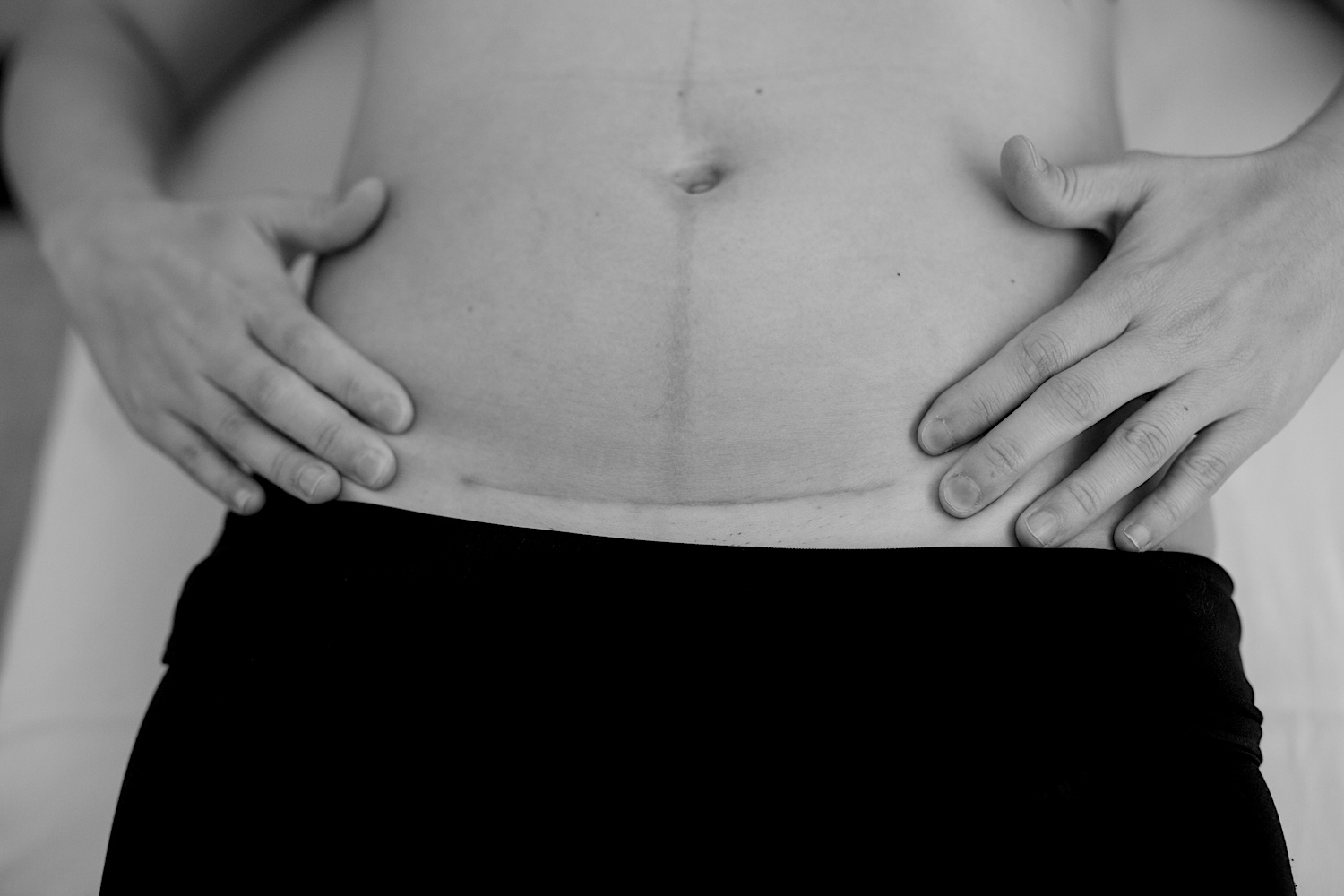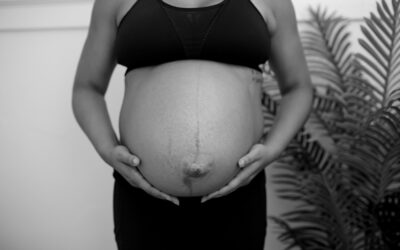The labor and delivery experience is unique to everyone. Depending on whom you ask, giving birth might feel beautiful, empowering, intense, scary… or all the above.
And it isn’t just the few hours (or days) of labor that bring up all that emotion. It’s the after part, too. Not the baby part. The body part.
As a board-certified pelvic floor therapist, I’ve heard a lot of concerns about what’s going to happen down there as a result of childbirth. Today, I want to answer one of those questions in-depth:
Is a C-section better for pelvic floor health?
Pelvic Floor Dysfunction After Birth
Your pelvic floor muscles are significantly affected by pregnancy, labor, and childbirth, increasing your risk of problems. Muscles and ligaments lengthen, pressure builds, and organs and tissues squish and move around to accommodate your growing baby. As a result, you might encounter some pelvic floor strength issues long term, even after your baby’s topside.
In general, pelvic floor problems are incredibly common. Most research estimates that about 1 in 4 women experience some form of pelvic floor dysfunction. And pregnancy alone is a significant risk factor for pelvic floor problems.
Common postpartum pelvic floor diagnoses or symptoms include:
- Urinary or fecal urgency, frequency, or and/or leakage
- Pelvic organ prolapse
- Painful sex
- Hemorrhoids
- Diastasis recti
Most people assume that giving birth vaginally is the primary cause of these challenges. But these things can happen regardless of what type of birth you have.
How a C-Section Impacts Your Pelvic Floor
How a C-section impacts your pelvic floor muscles depends on the type of postpartum symptoms you’re experiencing.
Some evidence suggests birthing via C-Section could reduce your risk of urinary incontinence and pelvic organ prolapse. People who have cesarean births are more likely to have pain in their lower abdomen, genitals, urinary tract, and during sex.
So, with the research in mind, it’s important to think more broadly about pregnancy, labor, delivery, and how these physical processes can impact your pelvic floor and core.
First, our postpartum bodies are different from our pre-baby bodies regardless of the mode of delivery we have. A C-section does not involve the baby passing through the vaginal canal. However, the pelvic floor muscles, vagina, and vulva still experience stress during pregnancy. C-sections are a huge surgery that can affect pelvic floor and core strength and coordination.
So, yes: You’re still at risk of developing postpartum pelvic floor dysfunction even if you have a C-section.
You’re generally more at risk if you:
- Experience pre-existing pelvic floor dysfunction.
- Maintain a high body mass index (BMI) at delivery.
- Birth your first baby later in life.
- Deliver a larger baby.
- Have a family history of pelvic floor problems.
C-Section vs. Vaginal Delivery
Now you might be wondering, “Sooooo… if both birthing options have pelvic floor-related risks, which should I choose?”
Unfortunately, it’s often not as simple as, “Should I give birth vaginally or via C-section?” Safety is the #1 priority, for both you and baby. And there are plenty of factors at play. Previous delivery experiences and the complexity of your current pregnancy, especially when considering a vaginal birth after a previous C-section (VBAC), can determine what options are medically available to you.
If your doctors say both choices are safe, you decide which one fits your values and preferences best. There’s no wrong way to give birth.
But in order to make the right decision for you, it’s important to make an informed choice.
The Pros and Cons of Vaginal and C-Section Births
This list isn’t all-inclusive. Talk with your medical provider about other risks and benefits associated with your unique medical history.
Pros of Vaginal Births
- Options for low-intervention births
- Generally shorter hospital stays and recovery period
- Decreased risk of surgery-related complications, like hemorrhage, infection, and medication reactions
- Possibility of earlier and prolonged skin-to-skin bonding, which can positively impact breastfeeding and mental health
Cons of Vaginal Births
- Possibility of perineal tearing or episiotomy
- Increased time laboring and actively pushing
- Greater likelihood of urinary incontinence and pelvic organ prolapse postpartum
- Possible postpartum perineal pain
- Birth injuries because of prolonged pushing or use of other interventions like forceps
- Emergency C-sections requiring use of general anesthesia
Pros of C-Section Births
- Decreased likelihood of delivery-related urinary incontinence and pelvic organ prolapse
- Options for scheduled delivery, increasing convenience and predictability while decrease need for general anesthesia
Cons of C-Section Births
- Longer hospital stays and postpartum recovery period
- Possibility of surgical complications, including hemorrhage, infection, bowel and bladder injuries, and reactions to medications
- Risks of numbness, pain, tightness, and mobility restriction around your incision site
- Developing a C-section shelf
- Increased possibility of placental complications in future pregnancies
- Likelihood of repeat C-section deliveries
- Possible impacts on earlier lactation and breastfeeding
Preparing for Childbirth
People tend to think that delivery just happens. But, in order to have the birth experience you want, it’s important to prepare! Planning for both vaginal and C-section deliveries can better mentally and emotionally prepare you in case something shifts in L&D.
And, of course, there’s the physical preparation. By learning how to protect your pelvic floor and core before hitting the delivery room, you can improve postpartum recovery outcomes!
The best gift you can give yourself is pelvic floor therapy during pregnancy. A pelvic floor therapist can provide:
- Guidance on proper labor positioning and pushing techniques.
- Education on labor phases and proper epidural timing.
- Exercises and stretches to strengthen and coordinate your pelvic floor muscles.
- Prevention for postpartum pelvic floor problems.
- Treatment for current pelvic floor dysfunction.
At-Home PT-Approved Workouts for Childbirth Prep
Taking excellent care of your pelvic floor is the name of the game, no matter what. And you can give your down there some extra care today with a V-Hive Membership!
Inside the V-Hive, you’ll find programs for your entire pregnancy journey—through postpartum and beyond:
- The Pregnancy Program: Access a week-by-week suite of workouts to strengthen the muscles of your pelvic floor and core— designed especially for pregnant bodies.
- The Childbirth Prep Program: Prepare your pelvic floor and core for a confident childbirth experience.
- The Childbirth Recovery Program: Ease into gentle movement in your first weeks following a C-section or vaginal birth.
- The Postpartum Program: Continue to rebuild pelvic floor and core strength after your baby arrives.
Start your V-Hive membership with a one-minute self-assessment and a 7-day free trial. Your path to a strong and happy pelvic floor starts here.




